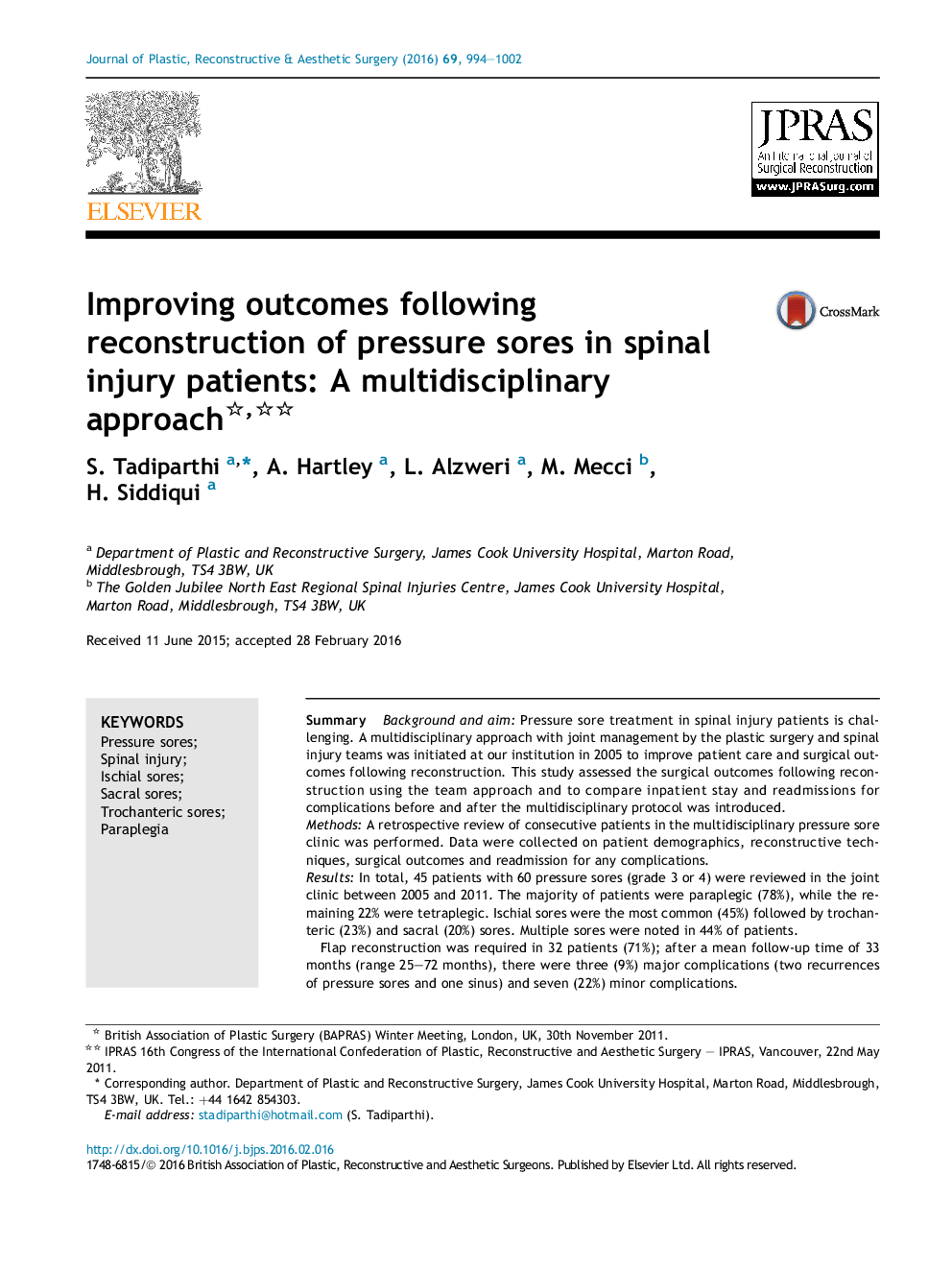| Article ID | Journal | Published Year | Pages | File Type |
|---|---|---|---|---|
| 4117161 | Journal of Plastic, Reconstructive & Aesthetic Surgery | 2016 | 9 Pages |
SummaryBackground and aimPressure sore treatment in spinal injury patients is challenging. A multidisciplinary approach with joint management by the plastic surgery and spinal injury teams was initiated at our institution in 2005 to improve patient care and surgical outcomes following reconstruction. This study assessed the surgical outcomes following reconstruction using the team approach and to compare inpatient stay and readmissions for complications before and after the multidisciplinary protocol was introduced.MethodsA retrospective review of consecutive patients in the multidisciplinary pressure sore clinic was performed. Data were collected on patient demographics, reconstructive techniques, surgical outcomes and readmission for any complications.ResultsIn total, 45 patients with 60 pressure sores (grade 3 or 4) were reviewed in the joint clinic between 2005 and 2011. The majority of patients were paraplegic (78%), while the remaining 22% were tetraplegic. Ischial sores were the most common (45%) followed by trochanteric (23%) and sacral (20%) sores. Multiple sores were noted in 44% of patients.Flap reconstruction was required in 32 patients (71%); after a mean follow-up time of 33 months (range 25–72 months), there were three (9%) major complications (two recurrences of pressure sores and one sinus) and seven (22%) minor complications.After introduction of patient care pathways through the multidisciplinary approach, the rate of readmission for complications decreased from 14% to 5.5% and inpatient stay upon readmission reduced from 65 to 45 days.ConclusionsImplementation of a multidisciplinary approach was key to optimising surgical outcomes, achieving a low recurrence rate (6%) and reducing readmissions.
